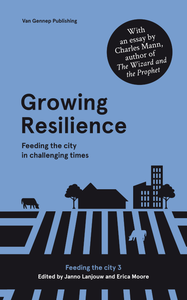User experience (UX) research on pervasive technologies faces considerable challenges regarding today's mobile context-sensitive applications: evaluative field studies lack control, whereas lab studies miss the interaction with a dynamic context. This dilemma has inspired researchers to use virtual environments (VEs) to acquire control while offering the user a rich contextual experience. Although promising, these studies are mainly concerned with usability and the technical realization of their setup. Furthermore, previous setups leave room for improvement regarding the user's immersive experience. This paper contributes to this line of research by presenting a UX case study on mobile advertising with a novel CAVE-smartphone interface. We conducted two experiments in which we evaluated the intrusiveness of a mobile locationbased advertising app in a virtual supermarket. The results confirm our hypothesis that context-congruent ads lessen the experienced intrusiveness thereby demonstrating that our setup is capable of generating preliminary meaningful results with regards to UX. Furthermore, we share insights in conducting these studies.
LINK
DOCUMENT
Smartphone apps allow retailers to track the location of their customers and provide the opportunity to reach them with location-based mobile ads. However, the efficacy of these ads often suffers from consumers’ feelings of intrusiveness. Little research has investigated how location-based mobile messages should be designed to maximize their effectiveness and avoid undesired outcomes such as feelings of intrusiveness. The present study tested the effect of openness in ad design, in interaction with location congruency of mobile advertising, using a virtual reality supermarket setting. A process of moderated serial mediation demonstrates indirect positive effects of ad openness on brand choice (via intrusiveness and Aad), moderated by location congruency. Specifically, openness in mobile ad design lowers perceived ad intrusiveness, which positively affects consumers’ brand choice (via Aad). This effect is stronger for ads that are presented in a location-congruent situation than for location-incongruent ads.
LINK
DOCUMENT
DOCUMENT
Sportverenigingen in Nederland dragen bij aan een gezonde leefstijl, sociale cohesie en inclusieve sportdeelname. Ondanks dat de sportparticipatie toeneemt, hebben de clubs het moeilijk om hun ledental op peil te houden. Diverse ontwikkelingen spelen daarbij een rol. De focus van het onderzoek in dit proefschrift richt zich op twee maatschappelijke ontwikkelingen, ‘individualisering’ en ‘digitalisering’. In zeven studies wordt antwoord gegeven op twee onderzoeksvragen: 1) hoe het clubgevoel van leden van sportvereniging kan worden geconceptualiseerd in termen van definitie, voorspellers en opbrengsten en 2) hoe sociaalnetwerksites van sportverenigingen kunnen bijdragen het ontwikkelen van het clubgevoel van leden? Die studies vormen samen een multimethode onderzoek. Resultaten laten zien dat clubgevoel verwijst naar de gevoelsband van leden met hun club op basis van participatie, relevantie en de sociale wereld van de club. Clubgevoel hangt samen met bindingsaspecten zoals de intentie om je in te zetten voor de club en te blijven. Sociaalnetwerksites van sportverenigingen kunnen helpen om dit clubgevoel te ontwikkelen, bij voorkeur door de kanalen in te zetten voor informatie en interactie over de club, de sport en de leden. De online kanalen vormen samen de virtuele community van de vereniging die, afhankelijk van de aanpak door de club en de leden, verschillende verschijningvormen kan hebben. Met hun virtuele community bieden sportverenigingen, naast de accommodatie, ook een ónline ontmoetingsplek voor sport en andere activiteiten waarmee ze het clubgevoel onder hun leden kunnen bevorderen. Met dit proefschrift geeft Nanny Kuijsters inzichten voor de ontwikkeling van virtuele community’s voor verenigingen, professionals en geïnteresseerden in de georganiseerde sport.
DOCUMENT

Even in a less eventful year, it’s no easy feat: working to make our food supply healthy and sustainable. But 2020 brought a spate of new challenges. It was the year of Brexit, Black Lives Matter, and the COVID-19 pandemic. A year of hope and loss and solidarity, of masks and worries and Zoom calls. Of infection sweeping through the meatpacking industry and sometimes, of empty supermarket shelves. It was also the year that brought us the glimmering realisation that everything could be different. When so much has changed – how we work, who we spend time with, how far we venture from home – what all might be possible for food and for farming? In Flevo Campus’s latest collection of essays, thirteen journalists, scholars, and thought leaders from the US, the Netherlands, and the UK share insight into the question: How can we build resilience into our food supply – and grow more resilient ourselves? Every year, Flevo Campus publishes the best work on feeding the cities of today and tomorrow. This year’s edition includes essays by Stephen Satterfield, Charles C. Mann, Herman Lelieveldt, Hester Dibbits, Kelly Streekstra, Sigrid Wertheim-Heck, Anke Brons, Joris Lohman, Sebastiaan Aalst, Marian Stuiver, Frank Verhoeven, Emily Whyman, and Lenno Munnikes.
DOCUMENT

This research concerning the experience and future of zoos was carried out from 2011-2012 and takes regional ideas concerning Zoo Emmen as well as global visions into account. The research focuses partly on Zoo Emmen, its present attractions and visitors while also comparing and contrasting visions on the future in relationship to other international zoos in the world. In this way, remarkable experiences and ideas will be identified and in the light of them, it can serve as inspiration for stakeholders of zoos at large. The main research subject is a look at the future zoos in view of: The Zoo Experience – an international experience benchmark; The Zoo of the Future – a Scenario Planning approach towards the future; The virtual zoo - zoo’s in the internet domain.
DOCUMENT

1e alinea column: Natuurlijk is de term digitale well being onzin. Het kan goed met je gaan op of via het internet maar well being blijft toch een analoge ervaring. Aan de andere kant, internet grijpt wel aan op well being. Daar kun je natuurlijk wel naar kijken en de vraag kun je natuurlijk wel stellen.
LINK